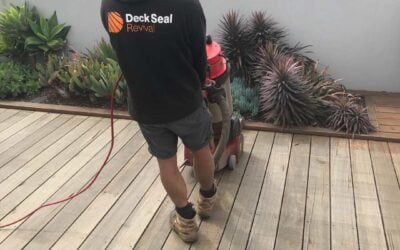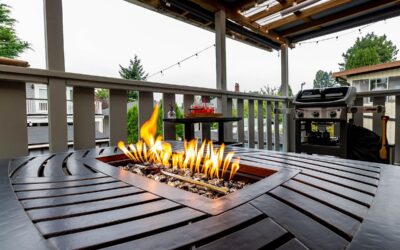Understanding Winter Painting Challenges & Advantages
Temperature Thresholds for Deck Painting
Winter deck painting requires understanding the critical temperature boundaries. Most cold-weather paints won’t perform properly below 10°C, but specialised formulations can work in temperatures as low as 4°C. Always check manufacturer specifications for your chosen product.
Humidity and Moisture Considerations
Winter brings unique moisture challenges, with morning dew and frost potentially compromising your deck protection efforts. Relative humidity should ideally remain below 85% during application for optimal results.
Surprising Benefits of Winter Application
Painting your deck during cooler months offers several unexpected advantages. The reduced likelihood of airborne debris like pollen means fewer particles will mar your fresh finish. Additionally, the slower drying times in cooler temperatures allow for deeper penetration of stains and better adhesion of paints. Many deck restoration professionals more availability during winter, potentially saving you money. Perhaps most importantly, winter deck care provides crucial protection before spring rains arrive.
Essential Preparation Steps
Proper preparation is crucial for successful winter deck painting projects. Taking time for thorough preparation will ensure your finish lasts through the seasons.
Weather Forecasting and Planning
Check forecasts for a window of at least three consecutive days with temperatures above 4°C and no rain. Your winter-ready deck requires consistent conditions throughout the application and drying periods.
Thorough Cleaning Techniques
Cold weather cleaning requires different approaches than summer maintenance. Use specialised cleaners designed to work effectively at lower temperatures, ensuring all mould, mildew, and grime are completely removed before paint application.
Surface Preparation Adjustments
Winter conditions demand extra attention to moisture testing. Use a moisture meter to confirm your deck’s moisture content is below 15% before beginning. drying times between preparation steps may need to be adjusted compared to summer deck maintenance.
Prep Tools and Materials Checklist
Essential tools for cold weather painting include moisture meters, and specialised cleaning solutions. Quality weatherproofing preparations will pay dividends when your deck survives winter beautifully.
Winter-Specific Product Selection
Choosing the right products is perhaps the most critical factor in successful winter deck painting. Not all paints and stains are created equal when it comes to cold-weather application.
Cold-Weather Formulated Paints and Stains
Low temperature paint products specifically engineered for winter use contain special additives that allow for proper film formation in cooler conditions. The appropriate products explicitly state application temperatures as low as 4-8°C on their labels.
Accelerators and Additives
Consider using drying accelerators specifically designed for winter-friendly products. These additives can significantly improve drying times without compromising finish quality. However, use them sparingly and strictly according to manufacturer guidelines to avoid compromising your weatherproofing results.
Application Techniques for Cold Weather
Applying paint in winter demands modified techniques to achieve professional results. Even with the right preparations and products, your winter deck painting success depends largely on proper application methods.
Best Time of Day to Paint
Time your paint application between 10am and 2pm when temperatures are at their highest. This timing ensures your deck surface has warmed sufficiently and provides maximum daylight hours for initial drying before the evening chill sets in.
Adapting Brush and Roller Techniques
Cold weather painting requires adjustments to your application approach. Work with slightly thinner coats than you might in summer, as thicker applications struggle to cure properly in lower temperatures. Keep your strokes consistent and work in smaller 1-metre sections to maintain better control over the wet edge.
Temperature Management During Application
Store your winter-friendly products indoors overnight before application day. Cold paint becomes viscous and difficult to spread evenly.
Proper Thickness Considerations
Apply multiple thin coats rather than fewer thick layers for your winter deck care regimen. While this approach requires more time, it substantially reduces the risk of bubbling, cracking, and improper curing that often plague thick applications in cold conditions. The final result will provide superior deck protection throughout the season.
Post-Application Care & Monitoring
Proper aftercare ensures your winter deck painting project delivers lasting results. Attention to detail during this phase is crucial for success.
Extended Drying Time Expectations
Allow significantly longer curing times than manufacturer recommendations suggest. Cold weather painting typically requires 24-48 additional hours before light foot traffic and up to twice the standard curing time before furniture placement.
Your Winter Deck Transformation Awaits
With proper preparation, product selection, application techniques, and aftercare, winter deck painting is not only feasible but can produce superior results. By following this guide, you’ll understand the process for excellent deck protection that withstands Australian weather extremes. Don’t let cooler temperatures delay your deck maintenance plans—instead, contact DeckSeal today for a free winter deck painting consultation. Our specialists in cold weather painting will ensure your deck receives professional treatment with premium winter-friendly products, giving you a beautifully refreshed outdoor space while your neighbours wait for spring. Call us now on 1800 332 525 or visit our website to book your winter deck assessment!






